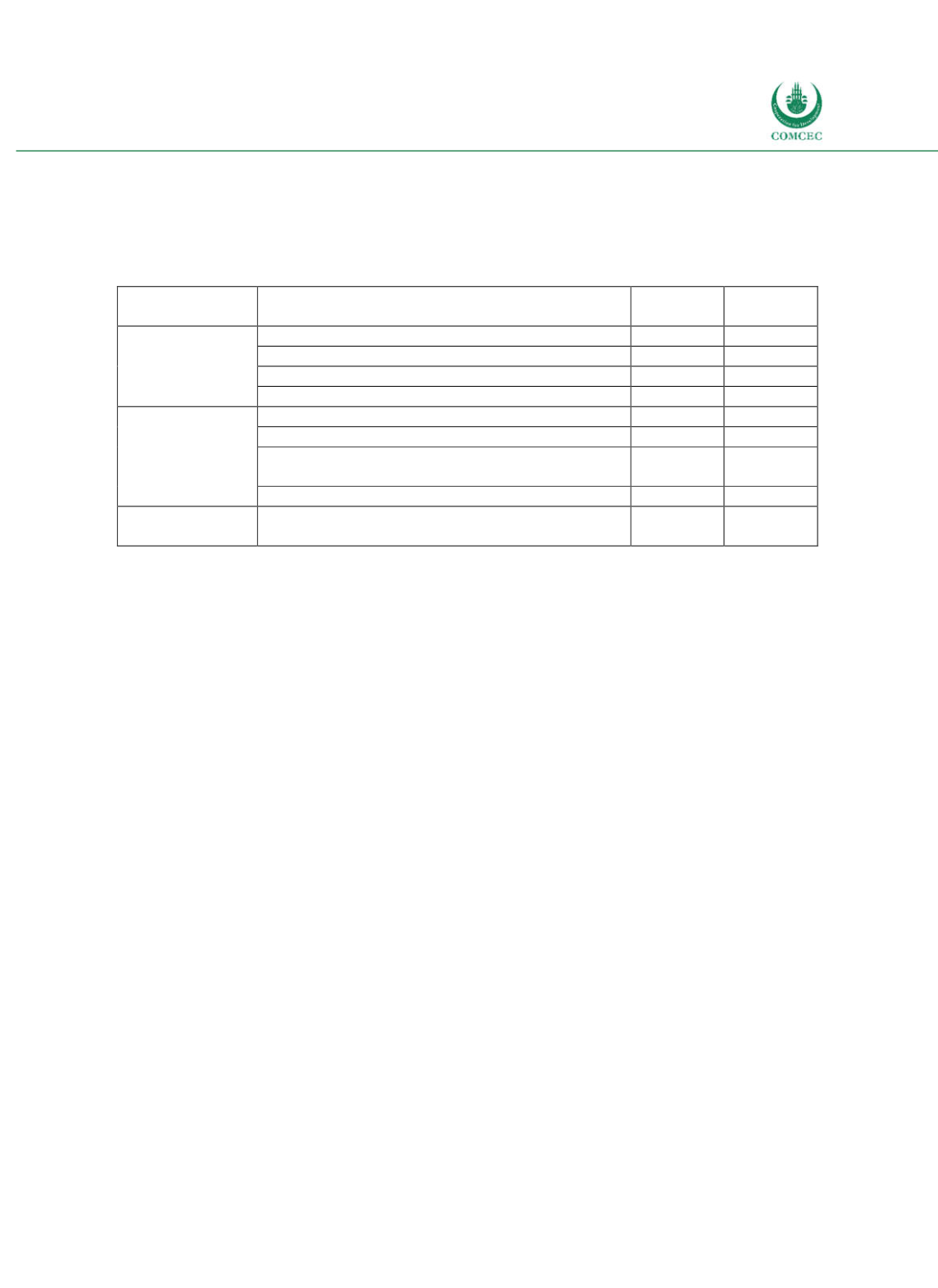

Improving Public Debt Management
In the OIC Member Countries
131
Evaluation of an additional Eurobond issuance, which might have positive spillovers on
domestic and external financing conditions thanks to the buildup of a positive reputation
Contribute to further develop the domestic securities market
Table 4-10: Albania – Cost and Risk Indicators for the Government’s Debt Portfolio (2015)
Risk type
Risk indicator
Indicator
2015
Objective
(2018)
Refinancing
risk
ATM of domestic debt (in years)
2.0
Min. 2.2
ATM of total debt (in years)
4.9
Min. 4.7
Domestic debt matured in 1 year (% of total)
55.9 Max. 46.0
Total debt matured in 1 year (% of total)
31.6 Max. 26.0
Interest rate
risk
ATR of domestic debt
1.8
Min. 2.0
ATR of total debt
3.2
Min 3.0
Domestic debt reevaluated within 1 year (% of
total)
67.7 Max. 60.0
Total debt reevaluated within 1 year (% of total)
58.1 Max. 55.0
Exchange rate
risk
FX debt (% of total)
48.5 50.055.0
Note: ATM = Average Time to Maturity; ATR = Average Time to Refixing; FX = Foreign exchange; ST = Short-term.
Source: MoF (2016b).
During 2015, debt management successfully engaged in operations to increase the maturity of
public debt (MoF 2016b): first, it focused on the issuance of longterm bonds (7year and 10year bonds). Second, it actively repurchased bonds of low remaining maturities. Concerning
foreign debt, the issuance of a €450 million fiveyear Eurobond in November 2015 and donor
financing with the IMF and the World Bank have lowered rollover risk in the near future.
Debt management, however, missed its target for the currency composition of debt according
to which debt denoted in domestic currency should make up at least 55% of total debt.
However, the reliance on foreign debt enabled Albania to further decrease refinancing and
interest rate risks because foreign markets provide financial resources at longer maturities
than domestic markets. This highlights the tradeoff between the different risk categories.
Moreover, given the narrow domestic investor base, refinancing on international markets
might be favourable for the domestic economy. It prevents that government drains domestic
financial resources and makes it easier for private domestic investors to get their projects
financed locally.
While the average maturity of outstanding debt amounts to 4.9 years, there is an important
difference between domestic and foreign debt: the average maturity of domestic debt equals
two years, while foreign debt has an average maturity of 8.1 years. The share of longterm debt
(debt with a maturity exceeding two years) has increased steadily in recent years (see Figure
427). During 2015, the average maturity of domestic debt increased by 0.2 years and that of
foreign debt by 0.5 years.
During 2015, the share of debt with fixed interest rates has slightly decreased to 68.2%. The
entire domestic debt is contracted at market interest rates, whereas foreign debt is equally
divided between debt at market rates and debt at concessional terms.
















